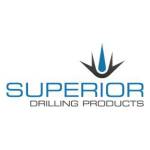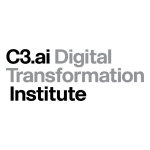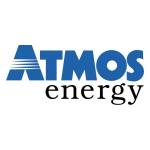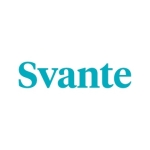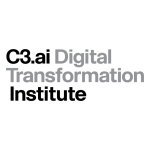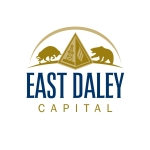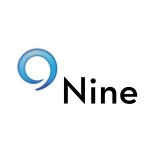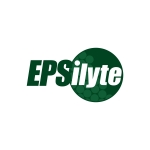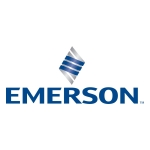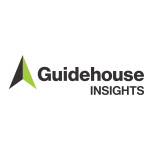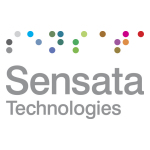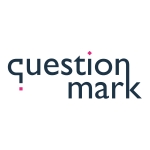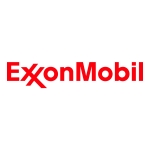Adjusted Earnings Per Share of $1.28 for the Fourth Quarter
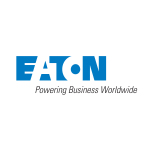
Full Year Free Cash Flow $2.6 Billion, at the Top of Guidance Range
Starting in 2021, Adjusted Earnings Per Share Will Be Revised to Add Back Amortization of Intangibles
Adjusted Earnings Per Share for 2021 Expected to be Between $5.40 and $5.80
DUBLIN--(BUSINESS WIRE)--Power management company Eaton Corporation plc (NYSE:ETN) today announced that earnings per share were $1.18 for the fourth quarter of 2020. Excluding charges of $0.06 per share related to acquisitions and divestitures and $0.04 per share related to a multi-year restructuring program, adjusted earnings per share were $1.28.
Sales in the fourth quarter of 2020 were $4.7 billion. Organic sales were down 5 percent, and the divestitures of the Lighting and Automotive Fluid Conveyance businesses reduced sales by 8 percent, partially offset by 2 percent growth from acquisitions.
Craig Arnold, Eaton chairman and chief executive officer, said, “Our fourth quarter was stronger than expected, with organic sales down 5 percent, at the high end of our guidance range and up 3 percent over the third quarter. We are pleased with our solid results, as our businesses have managed through the impact of the COVID-19 pandemic well.”
“Fourth quarter segment margins were 17.4 percent, reflecting a decremental on lower revenues of 21 percent,” said Arnold. “Our decremental margin performance was better than expected. This was the result of strong execution and continued focus on cost controls to offset pandemic-driven volume declines.”
“We generated strong cash flow in the fourth quarter,” said Arnold. “Operating cash flow totaled $943 million and free cash flow totaled $845 million.”
“For full year 2020, sales were $17.9 billion, down 11 percent organically from 2019. The divestitures of the Lighting and Automotive Fluid Conveyance businesses reduced sales by 7 percent and negative currency translation reduced sales by 1 percent, which was partially offset by 2 percent growth from acquisitions,” said Arnold. “Segment margins were 16.4 percent, reflecting a strong decremental margin of 23 percent.”
“Earnings per share for 2020 were $3.49. Excluding charges of $0.33 per share related to acquisitions and divestitures and $0.42 per share related to our multi-year restructuring program, adjusted earnings per share were $4.24,” said Arnold. “Operating cash flow was $2.9 billion, and free cash flow was $2.6 billion, at the top of our guidance range. Free cash flow as a percentage of revenues was 14.3 percent, 90 basis points over 2019 and an all-time record.”
“During 2020, we returned $2.8 billion to our shareholders in the form of dividends and share repurchases,” said Arnold. “Dividends totaled $1.2 billion, and share repurchases totaled $1.6 billion, representing 4 percent of our shares outstanding at the beginning of 2020.”
“We also took significant portfolio actions during 2020,” said Arnold. “In the first quarter, we completed the sale of our Lighting business and announced the sale of our Hydraulics business.”
“Looking at 2021, we expect our organic revenues to grow between 4 percent and 6 percent versus 2020, with growth in all segments. The divestitures of our Hydraulics and Lighting businesses are expected to reduce our sales by 8 percent partially offset by positive currency translation of approximately 1 percent,” said Arnold. “We anticipate segment margins between 17.6 percent and 18.0 percent, representing at the midpoint a 140 basis point improvement over 2020 and above the pre-pandemic levels of 2019.”
“We are pleased that we have recently signed agreements to acquire Tripp Lite and Cobham Mission Systems, allowing us to deploy $4.5 billion into high growth and high margin strategic businesses,” said Arnold.
“In 2021, we are revising our definition of adjusted earnings to add back amortization of intangibles. We believe this will provide investors with a more accurate measure of our performance and will make it easier to compare our performance to peers,” said Arnold. “For full year 2021, we expect adjusted earnings per share to be between $5.40 and $5.80, up 14 percent at the midpoint over 2020 adjusted to add back intangible amortization. We anticipate adjusted earnings per share for the first quarter of 2021 to be between $1.17 and $1.27.”
Business Segment Results
Sales for the Electrical Americas segment were $1.7 billion, down 18 percent from the fourth quarter of 2019, driven by a 19 percent reduction from the divestiture of the Lighting business and a 1 percent decline in organic sales, partially offset by 2 percent growth from the acquisition of Power Distribution, Inc. Operating profits were $359 million. Excluding the divested Lighting business, operating profits were down 1 percent from the fourth quarter of 2019.
“Operating margins were a strong 21.1 percent, up 120 basis points over the fourth quarter of 2019,” said Arnold. “The twelve-month rolling average of our orders in the fourth quarter, excluding Lighting, was down 1 percent. Despite the slight decline, we saw particular strength in residential and data center orders, and the backlog at the end of December remained strong, up 12 percent over December 2019.”
“We were pleased to sign an agreement last week to acquire Tripp Lite,” said Arnold. “The acquisition adds complementary products to serve data centers, users of industrial and medical equipment, and edge computing.”
Sales for the Electrical Global segment were $1.3 billion, down 5 percent from the fourth quarter of 2019. Organic sales were down 7 percent, at the high end of our guidance range, partially offset by positive currency translation of 2 percent. Operating profits were $208 million, down 7 percent from the fourth quarter of 2019.
“Operating margins were 16.6 percent, a decrease of 40 basis points from the fourth quarter of 2019,” said Arnold. “The twelve-month rolling average of our orders in the fourth quarter was down 6 percent, driven by declines in oil and gas and industrial markets. We saw particular strength in data centers and residential markets. The December backlog grew 14 percent over December 2019.”
“In mid December, we signed an agreement to buy 50 percent of HuanYu High Tech,” said Arnold. “HuanYu manufactures and markets low-voltage circuit breakers and contactors in China and throughout Asia Pacific. The investment provides us access to a strong portfolio of products, which opens up significant opportunities to grow our business throughout Asia Pacific.”
Hydraulics segment sales were $485 million, up 2 percent over the fourth quarter of 2019, driven entirely by growth in organic sales. Organic revenue growth was driven by strength in mobile equipment end markets. Operating profits were $51 million, up 70 percent over the fourth quarter of 2019.
“Operating margins in the fourth quarter were 10.5 percent, up 420 basis points over the fourth quarter of 2019,” said Arnold. “Orders in the fourth quarter increased 25 percent over the fourth quarter of 2019, driven by strength in mobile equipment end markets.”
Aerospace segment sales were $542 million, down 13 percent from the fourth quarter of 2019, driven by the continued downturn in commercial aviation, partially offset by growth in military sales. Organic sales were down 25 percent, while the acquisition of Souriau-Sunbank added 11 percent and positive currency translation added another 1 percent. Operating profits were $99 million, down 34 percent from the fourth quarter of 2019.
“Operating margins in the quarter were 18.3 percent, representing strong performance in light of the impact of the pandemic on sales,” said Arnold. “The twelve-month rolling average of orders in the fourth quarter was down 33 percent, driven by the downturn in commercial markets. Backlog at the end of December was down 14 percent compared to December 2019.”
“We are excited by the agreement we announced yesterday to acquire Cobham Mission Systems (CMS),” said Arnold. “CMS is a technological leader in important defense aerospace product lines and has attractive margins.”
The Vehicle segment posted sales of $620 million, down 7 percent from the fourth quarter of 2019. Organic sales were down 1 percent, well above the high end of our guidance range driven by better than expected recovery in NAFTA Class 8 and global light vehicle production. The divestiture of our Automotive Fluid Conveyance business at the end of last year reduced revenues by 5 percent, and currency translation was negative 1 percent. Operating profits were $103 million, down 9 percent from the fourth quarter of 2019, excluding the clutch warranty issue reported in the fourth quarter of 2019.
“Operating margins in the quarter were a strong 16.6 percent,” said Arnold. “Conditions have markedly improved in vehicle markets. Sales in the fourth quarter were up 8 percent over the third quarter and we expect this sequential growth trend to continue well into 2021.”
eMobility segment sales were $85 million, up 13 percent over the fourth quarter of 2019, driven by organic sales growth of 11 percent and positive currency translation of 2 percent. The segment recorded an operating loss of $5 million reflecting continued investment in research and development for new programs.
Eaton’s mission is to improve the quality of life and the environment through the use of power management technologies and services. We provide sustainable solutions that help our customers effectively manage electrical, hydraulic, and mechanical power – more safely, more efficiently, and more reliably. Eaton’s 2020 revenues were $17.9 billion, and we sell products to customers in more than 175 countries. We have approximately 92,000 employees. For more information, visit www.eaton.com.
Notice of conference call: Eaton’s conference call to discuss its Fourth quarter results is available to all interested parties as a live audio webcast today at 11 a.m. United States Eastern Time via a link on Eaton’s home page. This news release can be accessed under its headline on the home page. Also available on the website prior to the call will be a presentation on Fourth quarter results, which will be covered during the call.
This news release contains forward-looking statements concerning first quarter and full-year 2021 adjusted earnings per share, organic sales growth, adjusted segment margins, the expected impact on 2021 sales of acquisitions and divestitures, 2021 and 2022 anticipated restructuring charges, the closing dates for the Hydraulics divestiture and the HuanYu acquisition, and the acquisitions of Tripp Lite and CMS. These statements should be used with caution and are subject to various risks and uncertainties, many of which are outside the company’s control. The following factors could cause actual results to differ materially from those in the forward-looking statements: the course of the COVID-19 pandemic and government actions related thereto; unanticipated changes in the markets for the company’s business segments; unanticipated downturns in business relationships with customers or their purchases from us; competitive pressures on sales and pricing; unanticipated changes in the cost of material and other production costs, or unexpected costs that cannot be recouped in product pricing; the introduction of competing technologies; unexpected technical or marketing difficulties; unexpected claims, charges, litigation or dispute resolutions; strikes or other labor unrest; natural disasters; the performance of recent acquisitions; unanticipated difficulties completing or integrating acquisitions; new laws and governmental regulations; interest rate changes; changes in tax laws or tax regulations; stock market and currency fluctuations; and unanticipated deterioration of economic and financial conditions in the United States and around the world. We do not assume any obligation to update these forward-looking statements.
Financial Results
The company’s comparative financial results for the twelve months ended December 31, 2020 are available on the company’s website, www.eaton.com.
EATON CORPORATION plc
|
CONSOLIDATED STATEMENTS OF INCOME
|
|
|
|
|
|
|
|
|
|
|
|
Three months ended
December 31
|
|
Year ended
December 31
|
|
|
|
(In millions except for per share data)
|
|
2020
|
|
2019
|
|
2020
|
|
2019
|
Net sales
|
|
$
|
4,687
|
|
|
$
|
5,238
|
|
|
$
|
17,858
|
|
|
$
|
21,390
|
|
|
|
|
|
|
|
|
|
|
Cost of products sold
|
|
3,178
|
|
|
3,556
|
|
|
12,408
|
|
|
14,338
|
|
Selling and administrative expense
|
|
765
|
|
|
874
|
|
|
3,075
|
|
|
3,583
|
|
Research and development expense
|
|
140
|
|
|
152
|
|
|
551
|
|
|
606
|
|
Interest expense - net
|
|
36
|
|
|
42
|
|
|
149
|
|
|
199
|
|
Gain on sale of business
|
|
—
|
|
|
—
|
|
|
221
|
|
|
—
|
|
Other expense - net
|
|
15
|
|
|
82
|
|
|
150
|
|
|
73
|
|
Income before income taxes
|
|
553
|
|
|
532
|
|
|
1,746
|
|
|
2,591
|
|
Income tax expense
|
|
77
|
|
|
79
|
|
|
331
|
|
|
378
|
|
Net income
|
|
476
|
|
|
453
|
|
|
1,415
|
|
|
2,213
|
|
Less net income for noncontrolling interests
|
|
(1
|
)
|
|
(1
|
)
|
|
(5
|
)
|
|
(2
|
)
|
Net income attributable to Eaton ordinary shareholders
|
|
$
|
475
|
|
|
$
|
452
|
|
|
$
|
1,410
|
|
|
$
|
2,211
|
|
|
|
|
|
|
|
|
|
|
Net income per share attributable to Eaton ordinary shareholders
|
|
|
|
|
|
|
|
|
Diluted
|
|
$
|
1.18
|
|
|
$
|
1.09
|
|
|
$
|
3.49
|
|
|
$
|
5.25
|
|
Basic
|
|
1.19
|
|
|
1.09
|
|
|
3.51
|
|
|
5.28
|
|
|
|
|
|
|
|
|
|
|
Weighted-average number of ordinary shares outstanding
|
|
|
|
|
|
|
|
|
Diluted
|
|
401.3
|
|
|
415.8
|
|
|
404.0
|
|
|
420.8
|
|
Basic
|
|
398.7
|
|
|
413.6
|
|
|
402.2
|
|
|
419.0
|
|
|
|
|
|
|
|
|
|
|
Reconciliation of net income attributable to Eaton ordinary shareholders to adjusted earnings
|
|
|
|
|
|
|
|
|
Net income attributable to Eaton ordinary shareholders
|
|
$
|
475
|
|
|
$
|
452
|
|
|
$
|
1,410
|
|
|
$
|
2,211
|
|
Excluding acquisition and divestiture charges (after-tax)
|
|
23
|
|
|
114
|
|
|
133
|
|
|
174
|
|
Excluding restructuring program charges (after-tax)
|
|
14
|
|
|
—
|
|
|
170
|
|
|
—
|
|
Adjusted earnings
|
|
$
|
512
|
|
|
$
|
566
|
|
|
$
|
1,713
|
|
|
$
|
2,385
|
|
|
|
|
|
|
|
|
|
|
Net income per share attributable to Eaton ordinary shareholders - diluted
|
|
$
|
1.18
|
|
|
$
|
1.09
|
|
|
$
|
3.49
|
|
|
$
|
5.25
|
|
Excluding per share impact of acquisition and divestiture charges (after-tax)
|
|
0.06
|
|
|
0.28
|
|
|
0.33
|
|
|
0.42
|
|
Excluding per share impact of restructuring program charges (after-tax)
|
|
0.04
|
|
|
—
|
|
|
0.42
|
|
|
—
|
|
Adjusted earnings per ordinary share
|
|
$
|
1.28
|
|
|
$
|
1.37
|
|
|
$
|
4.24
|
|
|
$
|
5.67
|
|
EATON CORPORATION plc
|
BUSINESS SEGMENT INFORMATION
|
|
|
|
|
|
|
|
|
|
|
|
Three months ended
December 31
|
|
Year ended
December 31
|
|
|
|
(In millions)
|
|
2020
|
|
2019
|
|
2020
|
|
2019
|
Net sales
|
|
|
|
|
|
|
|
|
Electrical Americas
|
|
$
|
1,703
|
|
|
$
|
2,089
|
|
|
$
|
6,680
|
|
|
$
|
8,175
|
|
Electrical Global
|
|
1,252
|
|
|
1,311
|
|
|
4,703
|
|
|
5,172
|
|
Hydraulics
|
|
485
|
|
|
477
|
|
|
1,842
|
|
|
2,204
|
|
Aerospace
|
|
542
|
|
|
622
|
|
|
2,223
|
|
|
2,480
|
|
Vehicle
|
|
620
|
|
|
664
|
|
|
2,118
|
|
|
3,038
|
|
eMobility
|
|
85
|
|
|
75
|
|
|
292
|
|
|
321
|
|
Total net sales
|
|
$
|
4,687
|
|
|
$
|
5,238
|
|
|
$
|
17,858
|
|
|
$
|
21,390
|
|
|
|
|
|
|
|
|
|
|
Segment operating profit (loss)
|
|
|
|
|
|
|
|
|
Electrical Americas
|
|
$
|
359
|
|
|
$
|
416
|
|
|
$
|
1,352
|
|
|
$
|
1,549
|
|
Electrical Global
|
|
208
|
|
|
223
|
|
|
750
|
|
|
897
|
|
Hydraulics
|
|
51
|
|
|
30
|
|
|
186
|
|
|
193
|
|
Aerospace
|
|
99
|
|
|
150
|
|
|
414
|
|
|
595
|
|
Vehicle
|
|
103
|
|
|
63
|
|
|
243
|
|
|
460
|
|
eMobility
|
|
(5
|
)
|
|
1
|
|
|
(8
|
)
|
|
17
|
|
Total segment operating profit
|
|
815
|
|
|
883
|
|
|
2,937
|
|
|
3,711
|
|
|
|
|
|
|
|
|
|
|
Corporate
|
|
|
|
|
|
|
|
|
Amortization of intangible assets
|
|
(89
|
)
|
|
(87
|
)
|
|
(354
|
)
|
|
(367
|
)
|
Interest expense - net
|
|
(36
|
)
|
|
(42
|
)
|
|
(149
|
)
|
|
(199
|
)
|
Pension and other postretirement benefits expense
|
|
(11
|
)
|
|
(5
|
)
|
|
(40
|
)
|
|
(12
|
)
|
Restructuring program charges
|
|
(17
|
)
|
|
—
|
|
|
(214
|
)
|
|
—
|
|
Other expense - net
|
|
(109
|
)
|
|
(217
|
)
|
|
(434
|
)
|
|
(542
|
)
|
Income before income taxes
|
|
553
|
|
|
532
|
|
|
1,746
|
|
|
2,591
|
|
Income tax expense
|
|
77
|
|
|
79
|
|
|
331
|
|
|
378
|
|
Net income
|
|
476
|
|
|
453
|
|
|
1,415
|
|
|
2,213
|
|
Less net income for noncontrolling interests
|
|
(1
|
)
|
|
(1
|
)
|
|
(5
|
)
|
|
(2
|
)
|
Net income attributable to Eaton ordinary shareholders
|
|
$
|
475
|
|
|
$
|
452
|
|
|
$
|
1,410
|
|
|
$
|
2,211
|
|
EATON CORPORATION plc
|
CONDENSED CONSOLIDATED BALANCE SHEETS
|
|
|
|
|
|
|
|
December 31,
2020
|
|
December 31,
2019
|
(In millions)
|
|
|
Assets
|
|
|
|
|
Current assets
|
|
|
|
|
Cash
|
|
$
|
438
|
|
|
$
|
370
|
|
Short-term investments
|
|
664
|
|
|
221
|
|
Accounts receivable - net
|
|
2,904
|
|
|
3,437
|
|
Inventory
|
|
2,109
|
|
|
2,805
|
|
Assets held for sale
|
|
2,487
|
|
|
1,377
|
|
Prepaid expenses and other current assets
|
|
576
|
|
|
518
|
|
Total current assets
|
|
9,178
|
|
|
8,728
|
|
|
|
|
|
|
Property, plant and equipment - net
|
|
2,964
|
|
|
3,496
|
|
|
|
|
|
|
Other noncurrent assets
|
|
|
|
|
Goodwill
|
|
12,903
|
|
|
13,456
|
|
Other intangible assets
|
|
4,175
|
|
|
4,638
|
|
Operating lease assets
|
|
428
|
|
|
436
|
|
Deferred income taxes
|
|
426
|
|
|
372
|
|
Other assets
|
|
1,750
|
|
|
1,679
|
|
Total assets
|
|
$
|
31,824
|
|
|
$
|
32,805
|
|
|
|
|
|
|
Liabilities and shareholders’ equity
|
|
|
|
|
Current liabilities
|
|
|
|
|
Short-term debt
|
|
$
|
1
|
|
|
$
|
255
|
|
Current portion of long-term debt
|
|
1,047
|
|
|
248
|
|
Accounts payable
|
|
1,987
|
|
|
2,114
|
|
Accrued compensation
|
|
351
|
|
|
449
|
|
Liabilities held for sale
|
|
468
|
|
|
325
|
|
Other current liabilities
|
|
2,072
|
|
|
1,741
|
|
Total current liabilities
|
|
5,926
|
|
|
5,132
|
|
|
|
|
|
|
Noncurrent liabilities
|
|
|
|
|
Long-term debt
|
|
7,010
|
|
|
7,819
|
|
Pension liabilities
|
|
1,588
|
|
|
1,462
|
|
Other postretirement benefits liabilities
|
|
330
|
|
|
328
|
|
Operating lease liabilities
|
|
326
|
|
|
331
|
|
Deferred income taxes
|
|
277
|
|
|
396
|
|
Other noncurrent liabilities
|
|
1,394
|
|
|
1,204
|
|
Total noncurrent liabilities
|
|
10,925
|
|
|
11,540
|
|
|
|
|
|
|
Shareholders’ equity
|
|
|
|
|
Eaton shareholders’ equity
|
|
14,930
|
|
|
16,082
|
|
Noncontrolling interests
|
|
43
|
|
|
51
|
|
Total equity
|
|
14,973
|
|
|
16,133
|
|
Total liabilities and equity
|
|
$
|
31,824
|
|
|
$
|
32,805
|
|
EATON CORPORATION plc
NOTES TO THE FOURTH QUARTER 2020 EARNINGS RELEASE
Amounts are in millions of dollars unless indicated otherwise (per share data assume dilution).
Note 1. NON-GAAP FINANCIAL INFORMATION
This earnings release includes certain non-GAAP financial measures. These financial measures include adjusted earnings, adjusted earnings per ordinary share, adjusted earnings per ordinary share including accretion from certain acquisitions and excluding amortization of intangibles, free cash flow, and operating profit before expense in the fourth quarter of 2019 for expected warranty costs in the Vehicle business segment, each of which differs from the most directly comparable measure calculated in accordance with generally accepted accounting principles (GAAP). A reconciliation of each of these financial measures to the most directly comparable GAAP measure is included in this earnings release. Management believes that these financial measures are useful to investors because they exclude certain transactions, allowing investors to more easily compare Eaton Corporation plc's (Eaton or the Company) financial performance period to period. Management uses this information in monitoring and evaluating the on-going performance of Eaton and each business segment.
In 2021, Eaton is revising its definition of adjusted earnings to add back intangible asset amortization expense as follows:
|
|
Three months ended
March 31
|
|
Year ended
December 31
|
|
|
2020
|
|
2021
|
|
2020
|
|
2021
|
|
|
Results
|
|
Guidance
|
|
Results
|
|
Guidance
|
Net income per share attributable to Eaton ordinary shareholders - diluted
|
|
$
|
1.07
|
|
|
$0.87 to 0.97
|
|
$
|
3.49
|
|
|
$4.26 to 4.66
|
Excluding per share impact of acquisition and divestiture charges (after-tax)
|
|
0.02
|
|
|
0.09
|
|
|
0.33
|
|
|
0.21
|
|
Excluding per share impact of restructuring program charges (after-tax)
|
|
—
|
|
|
0.04
|
|
|
0.42
|
|
|
0.13
|
|
Excluding per share impact of intangible amortization expense (after-tax)
|
|
0.16
|
|
|
0.17
|
|
|
0.67
|
|
|
0.70
|
|
Net accretion from Tripp Lite and Cobham Mission Systems (after-tax) 1
|
|
—
|
|
|
—
|
|
|
—
|
|
|
0.10
|
|
Adjusted earnings per ordinary share
|
|
$
|
1.25
|
|
|
$1.17 to 1.27
|
|
$
|
4.91
|
|
|
$5.40 to 5.80
|
1 Accretion from the acquisitions of $0.25, partially offset by $0.15 of reduced share repurchases and additional financing costs.
|
For full year 2020, free cash flow of $2.6 billion excludes $0.4 billion of capital expenditures for property, plant and equipment. For the fourth quarter of 2020, free cash flow of $845 excludes $98 of capital expenditures for property, plant and equipment.
Vehicle business segment operating profit of $63 for the fourth quarter of 2019 was $113 excluding $50 of expense for expected warranty costs to correct the performance of a product which incorporated a defective part from a supplier.
Note 2. ACQUISITIONS AND DIVESTITURES OF BUSINESSES
Agreement to Acquire Cobham Mission Systems
On January 31, 2021, Eaton signed an agreement to acquire Cobham Mission Systems (CMS), a leading manufacturer of air-to-air refueling systems, environmental systems, and actuation primarily for defense markets. Under the terms of the agreement, Eaton will pay $2.83 billion. The transaction is subject to customary closing conditions and is expected to close in the second half of 2021. CMS will be reported within the Aerospace business segment.
Agreement to Acquire Tripp Lite
On January 28, 2021, Eaton signed an agreement to acquire Tripp Lite, a leading supplier of power quality products and connectivity solutions including single-phase uninterruptible power supply systems, rack power distribution units, surge protectors, and enclosures for data centers, industrial, medical, and communications markets in the Americas. Under the terms of the agreement, Eaton will pay $1.65 billion for Tripp Lite. The transaction is subject to customary closing conditions and is expected to close in the middle of 2021. Tripp Lite will be reported within the Electrical Americas business segment.
Agreement to Acquire a 50% stake in HuanYu High Tech
On December 15, 2020, Eaton signed an agreement to acquire a 50 percent stake in HuanYu High Tech, a subsidiary of HuanYu Group that manufactures and markets low-voltage circuit breakers and contactors in China, and throughout the Asia-Pacific region. HuanYu High Tech had 2019 sales of $106 and has production operations in Wenzhou, China. The transaction is subject to customary closing conditions and regulatory approvals and is expected to close in the second quarter of 2021. Eaton expects to account for this investment on the equity method of accounting and will report it within the Electrical Global business segment.
Sale of Lighting business
On March 2, 2020, Eaton sold its Lighting business to Signify N.V. for a cash purchase price of $1.4 billion. The Company recognized a pre-tax gain of $221. The Lighting business, which had sales of $1.6 billion in 2019 as part of the Electrical Americas business segment, serves customers in commercial, industrial, residential, and municipal markets. During the fourth quarter of 2019, the Company determined the Lighting business met the criteria to be classified as held for sale. Therefore, its assets and liabilities have been presented as held for sale in the Consolidated Balance Sheet as of December 31, 2019.
Pending Sale of Hydraulics business
On January 21, 2020, Eaton entered into an agreement to sell its Hydraulics business to Danfoss A/S, a Danish industrial company, for $3.3 billion in cash. Eaton’s Hydraulics business is a global leader in hydraulics components, systems, and services for industrial and mobile equipment. The business had sales of $1.8 billion and $2.2 billion for the years ended December 31, 2020 and 2019, respectively. During the first quarter of 2020, the Company determined the Hydraulics business met the criteria to be classified as held for sale. Therefore, its assets and liabilities have been presented as held for sale in the Consolidated Balance Sheet as of December 31, 2020. The transaction is subject to customary closing conditions and regulatory approvals.
Note 3. ACQUISITION AND DIVESTITURE CHARGES
Eaton incurs integration charges and transaction costs to acquire businesses, and transaction costs and other charges to divest and exit businesses. Eaton also recognizes gains and losses on the sale of businesses. A summary of these Corporate items follows:
|
|
Three months ended
December 31
|
|
Year ended
December 31
|
|
|
2020
|
|
2019
|
|
2020
|
|
2019
|
Acquisition integration, divestiture charges, and transaction costs
|
|
$
|
25
|
|
|
$
|
133
|
|
|
$
|
288
|
|
|
$
|
198
|
|
Gain on the sale of the Lighting business
|
|
—
|
|
|
—
|
|
|
(221
|
)
|
|
—
|
|
Total before income taxes
|
|
25
|
|
|
133
|
|
|
67
|
|
|
198
|
|
Income tax expense (benefit)
|
|
(2
|
)
|
|
(19
|
)
|
|
66
|
|
|
(24
|
)
|
Total after income taxes
|
|
$
|
23
|
|
|
$
|
114
|
|
|
$
|
133
|
|
|
$
|
174
|
|
Per ordinary share - diluted
|
|
$
|
0.06
|
|
|
$
|
0.28
|
|
|
$
|
0.33
|
|
|
$
|
0.42
|
|
Contacts
Eaton Corporation plc
Margaret Hagan, Media Relations, +1 (440) 523-4343
This email address is being protected from spambots. You need JavaScript enabled to view it.
or
Yan Jin, Investor Relations, +1 (440) 523-7558
Read full story here 

